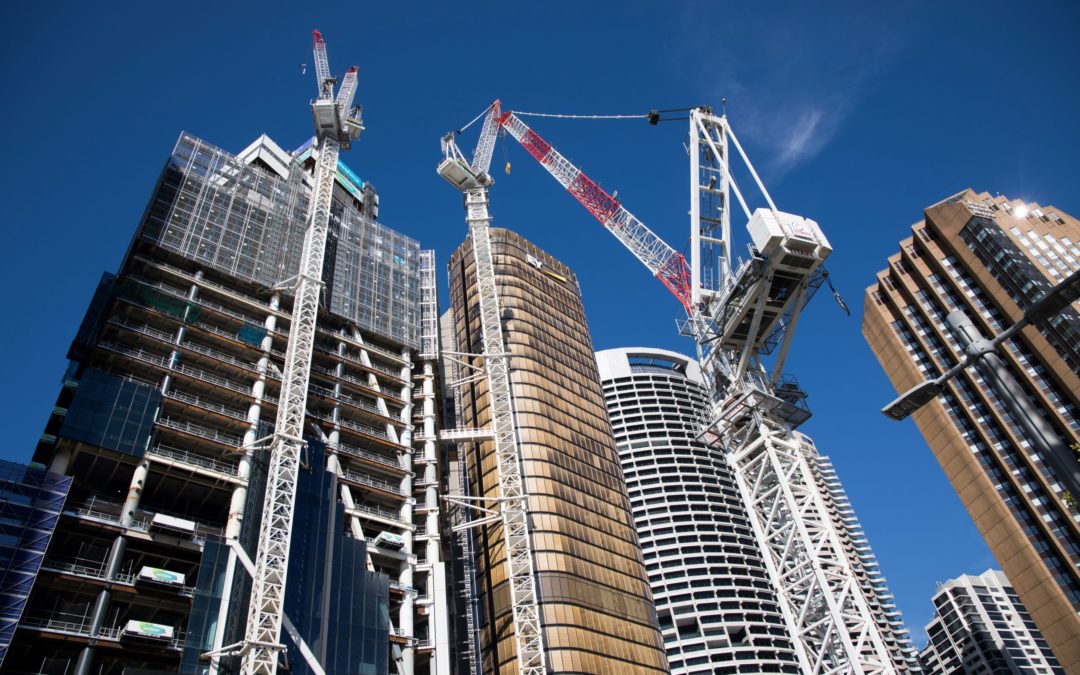IN A POST-COVID, SUPPLY CHAIN SHORTAGE AND CYBER ATTACK WORLD, WHAT TECHNOLOGY WILL HAVE AN IMPACT ON CONSTRUCTION COMPANIES AND ACROSS THE ENTIRE SECTOR OVER THE NEXT 12 MONTHS?
There can be little debate that the world has changed drastically in the last couple of years. From Covid-19 and the remote and working from home revolution, to Brexit and supply chain crisis impact, and more recently, the ever-increasing cyber attacks and hacks, few of us would have predicted just months ago. All of these issues have had a far-reaching impact on the construction sector.
In this blog, SD-WAN Solutions highlights the varied and myriad technological innovations the leading construction businesses are adopting to counter this impact, many of which are now trickling down into SMEs and even family run building companies and partner organisations. As diverse and as revolutionary as many of the trends below are they all have one thing in common – they rely on a state of the art, secure, always-on network, such as SD-WAN, to ensure optimisation of the technology but also the financial investment such adoptions require.
Technology Revolutionising Staff Health and Safety – wearable tech innovations in the construction sector
- Hardhats just got clever – hardhat wearable technology is being used to protect workers from environmental risk beyond the traditional things falling on their head or banging heads, it is now being used to monitor whether workers are lightheaded or over-heated. It is also being used to call emergency services should an incident happen to lone workers. Essential to this is a continually connected network, as if this technology fails due to network outage, construction companies could find themselves in court.
- Wearables go EXOSKELETON – this innovation makes construction workers almost superhuman but in reality, it is all about health and safety as exoskeleton wear minimises risk and injuries to workers. Think Ants and how they can carry more than their body weight and how their exoskeleton protects them from being crushed from such heavy weights many construction workers lift and carry on a daily basis.
Security Technology Adoption Ramps Up – how the construction sector will react to increased cyber threats
- Construction Business a Key Target for Cyber Criminals – Construction is the third most common industry to experience ransomware attacks in 2021. As cyberattacks increase through 2022, as experts predict, there is a recognised urgent need for state-of-the-art cyber protection throughout the sector.
- Three Quarters of Construction Businesses Not Protected Against Cyberattacks – a recent study from IBM Ponemon discovered 74% of construction businesses are not prepared for nor adequately protected against cyberattacks, and that they do not have a detailed incident response plan or recovery strategy in place.
- SD-WAN and SASE Go Mainstream – companies will be looking for the latest network technologies that will support their digital transformation and all of the technologies mentioned in this blog, and protect their technology, their applications, their data, their financial transactions, daily operations, critical business continuations and their reputation. SASE security will fight the latest cyber threats at generation 5 and 6 levels and it is important that businesses realise that there is no SASE without SD-WAN.
LIKE THIS BLOG? READ ALL ABOUT WHY YOUR TECHNOLOGY PROVIDER SHOULD BE TALKING TO YOU ABOUT HOW SASE WILL SECURE YOUR BUSINESS FROM CYBER ATTACKS
- Construction Preparing for Cyberattacks – a report from insurer Hiscox’s entitled ‘Cyber Readiness Report2021’, states that construction businesses rank in the TOP FIVE for cyber criminals and attackers, making construction a global target for all types of cyber attacks.
- The Value of Data – construction companies are beginning to realise the value of their data and are compiling and using it constructively. However the value of their data is not lost on cyber criminals, who aim to hack and use it or issue a ransomware attack. Statistics show that only 47% of companies get their data back whilst only 8% more retrieve their data via back-up.
- Reputation Protection – in the light of all of the above factors many construction companies are seeking damage limitation strategies by way of reputation protection post-attack. It is imperative that construction companies appreciate that all cyber attacks can be prevented using the very latest cyber security technologies such as SASE.
Building Businesses Get Truly Smart – smart technology goes mainstream from design through to building and monitoring
- Sensing build strengths and weaknesses – sensors monitoring technology is being implemented to assess the strength and weaknesses of structures beyond what the human eye can detect to reduce worker risk and exposure. A multi-use technology, this smart infrastructure innovation is also being utilised predicting not only human error but natural issues such as rock falls in the mining sector and even in rescue scenarios post natural disasters.
- Constructing new realities – AR is now the norm with architects and building companies sharing AR blueprints as a matter of daily course, right down to snagging eradication and interior design. Whilst VR is being used in construction beyond just the build, with computer modelling being used in the health and safety arena for everything from training to safety management and even running risk management simulations.
- IoT often the weakest security link – IoT is increasingly impacting across the construction sector and also its supply chain, but the automation trend is growing far and wide in many sectors, with predictions of tens of billions of IoT devices coming online over the next 2 years. When you consider that 93% of IoT devices are unsecured, it makes sense of the fact that hackers see IoT devices as the open door to many businesses network, data and financial transactions.
- LiDAR illuminates the target – LiDAR laser light is being used for measuring and sensing on a wide range of construction site equipment, enabling workers to scan in high resolution 3D for everything from health and safety to actual construction.
- Ai Acceleration – Ai is fast accelerating construction projects and increasing efficiencies across the board. These simultaneous evaluation of millions of data points and scheduling options are reducing costs and bringing in projects on time and even before time.
- BIM modelling combines IoT and AR – 3D modelling is rapidly becoming the norm, companies who deploy BIM software technology to generate smart workflows and design are gaining a competitive edge on those construction companies who are not.
- 3D Print a Game Changer – 3D printing is enabling entire homes to be printed cheaply and rapidly. Some homes are coming in at less than $10k and are fuelling the ‘live small generation’. 3D printed houses will fuel a boom in the real estate sector for first time buyers who cannot get on the property ladder, eco homes and modern housing in 3rd world nations will also see huge demand over the coming years.
Robots Enter Construction Sites – what robot technology will impact on construction businesses in 2022 and 2023?
- Robots onsite – HRP-5P is a robot in humanoid form capable of performing physical and unskilled tasks such as lifting and carrying but some are now moving onto installations of dry wall. Expect TYBOT Automated Track Loader and Doxel ai.
- Robots swarming onsite – hundreds of small individual robots will be taking over mundane site tasks, for example laying bricks, mixing cement and carrying tools and equipment.
- Robots repair infrastructure – robots will be used to repair hard to reach locations or go in after natural disasters in areas that are potentially too dangerous for humans, for regular maintenance work, new construction and large-scale repairs in war zones and post natural disaster.
We hope you found this construction trend blog helpful. We have more construction content coming soon but why not checkout our construction pages and see how we can help your construction business with the latest network and security solutions.

